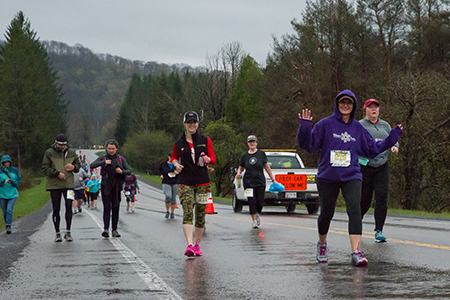We are a participant in the Amazon Services LLC Associates Program, an affiliate advertising program designed to provide a means for us to earn fees by linking to Amazon.com and affiliated sites, this is at NO extra cost to you. These small fees allow us to create great content and keep striving to create better content.

Five Ways You Can Shake Up Your Running Routine
I’ll admit it — running can sometimes get a little boring. I love running and I do it every day, but that doesn’t mean there aren’t times when I need to find some way to shake things up or reinvigorate my routine. And if you’ve recently adopted running as a new hobby, especially if you’re doing it as a way of maintaining sanity while you’re living under a stay-at-home order, you need to find a way to make it interesting. Otherwise, it just feels repetitive and gets borings. And if it gets boring, you’ll be less inclined to do it.
I’ve found that running needs to be both fun and challenging. That means you can’t do the exact same thing every day for weeks on end. Here are five easy ways I would recommend changing your running routine if what you’re doing is starting to feel predictable and easy.
Change your Route and Playlist
Did you know that doing high-intensity intervals could give you the same aerobic benefit as a long-distance run in much less time? Try pushing yourself to your maximum level of exertion for two minutes, then slow down to an easier jog for three to five minutes of recovery. Alternate like this for 20 minutes and see how you feel. If you’re doing it right, you’ll feel pretty wiped out! That’s because your body is getting the same aerobic benefit in those 20 minutes that it would if you ran for an hour at a slow, steady pace.
But even if you’re not interested in doing high-intensity interval training quite like this, you can still challenge yourself by increasing your speed. High-intensity intervals depend on pushing yourself to your maximum level, but even increasing your speed by one or two miles per hour every so often will challenge you. Try designating landmarks or using a stopwatch to determine times when you will boost your speed. Go for a far as you can, whether that’s around the block or for a quarter mile, before dropping back down to your regular speed.
Try Sprinting or Interval Training
Did you know that doing high-intensity intervals could give you the same aerobic benefit as a long-distance run in much less time? Try pushing yourself to your maximum level of exertion for two minutes, then slow down to an easier jog for three to five minutes of recovery. Alternate like this for 20 minutes and see how you feel. If you’re doing it right, you’ll feel pretty wiped out! That’s because your body is getting the same aerobic benefit in those 20 minutes that it would if you ran for an hour at a slow, steady pace.
But even if you’re not interested in doing high-intensity interval training quite like this, you can still challenge yourself by increasing your speed. High-intensity intervals depend on pushing yourself to your maximum level, but even increasing your speed by one or two miles per hour every so often will challenge you. Try designating landmarks or using a stopwatch to determine times when you will boost your speed. Go for a far as you can, whether that’s around the block or for a quarter mile, before dropping back down to your regular speed.
Break It Up
If alternating between super fast and slow speeds (or moderately fast and moderate speeds) isn’t something you enjoy, you can interrupt your runs in other ways.
Try stopping every mile or half-mile to do calisthenics. Drop down on the side of the road or trail to do a series of pushups, lunges, squats, bridges, crunches, bear crawls, frog jumps or planks. Doing this will not only add some variety to your workout (and keep it interesting) but also engage different muscles that running doesn’t. And let’s face it — as great as running is for strengthening your heart and cardiovascular system, it can leave your upper body a little bit underworked unless you’re doing some resistance training.
Calisthenics aren’t the only way to break up your run. You can also divide your long run into two shorter runs — one in the morning and one in the evening. Doing a shorter run might feel easier, but you’ll still be getting the same minutes of aerobic activity if you do two of them.

Plan for Something in the Future
Running tends to be a pretty solitary endeavor — I like running because it gives me some alone time. This is one of the reasons it’s a great workout for when you’re practicing social distancing.
But I’ll admit there are times when the solitude gets a little lonely and I need to make it more of a social activity. Under normal circumstances, that’s not a problem. I can register for a race, meet up with some friends for a group run, even plan a trip to some place with great running trails. Unfortunately, none of these options are feasible or safe when the world is under lockdown.
That doesn’t mean you can’t plan for the future. Register for a race coming up in the fall. Scope out an Airbnb close to a scenic running trail. Talk to some friends about starting a Saturday running meet-up once the coronavirus pandemic is behind us.
Sure, just planning these things doesn’t help change up your routine right now. But what it does change is your motivation — now you have something specific you’re training for. You want to do your best at the race. You want to keep up with your friends when you do your group run. You want to push yourself to go farther when you go on that running trip. All of these are great reasons to keep running, and they’ll ensure you have a positive attitude as you practice some of the aforementioned tips.
Which leads me to the last way to shake things up…
Inspire Others (and Hold Yourself Accountable, Too)
Somewhere out there is another runner who is struggling with motivation just as much as you are. Even if you can’t meet up with them for an exercise session right now, you can still exchange some inspiration virtually. Take some photos on your next run and share them on Instagram. Offer up some reflections via Twitter on what getting in shape means to you. Let other people know that you’re still running and encourage them to keep running, too!
It’s a small gesture, and in some ways, it might feel a little self-indulgent. “Nobody wants to see someone bragging about their workout on social media,” you think. And in many ways, I agree with you.
But what if it isn’t about bragging? What if it’s about holding yourself accountable. Your post is your way of saying, “I’m sticking with this because I love it and it makes me feel good.” I’ve found that when I get on social media to talk about running, I get a lot of positive feedback from other runners. It makes me realize we’re all in this together. And every other runner out there is cheering you on — so you better not let them down. You better keep running.

Dylan Roche
is an Annapolis-based writer and marathon runner. As a journalist focused on everything from fitness to arts and culture, he has written for a variety of publications, including Livestrong, What’s Up Annapolis, OurHealth Virginia, UpstART and Chesapeake Family Life. His first novel, “The Purple Bird,” came out in 2019. Follow him on Twitter and Instagram at @DylanIsWriting
Recent Posts

Garmin Vivioactive 4 vs Forerunner 245
Garmin Forerunner 245 vs. Vivoactive 4 About 21% of Americans use a smartwatch or fitness tracker, but not all models stack up to one another.

Garmin Vivioactive 4 Review
Garmin Vivioactive 4 Garmin Overview Before we dive into the Vivioactive 4 Review, what do you need to know about Garmin as a company?

13.1 Reasons to Run a Half Marathon
13.1 Reasons to Run a Half Marathon Running a half marathon is both a physical and mental challenge. Physically, there are hours of training that

Running At Night is Awesome: 10 Tricks and Tips
10 Tricks and Tips for Running at Night With the days getting shorter and darker, you might wonder how to squeeze your run in during

Why Is A Marathon 26.2 Miles?
Why Is a Marathon 26.2 Miles? For many long-distance runners, the marathon is the ultimate goal. Whether you simply want to complete a marathon or

Garmin Enduro vs Forerunner 945
Garmin Enduro vs Forerunner 945 Are you an athlete or outdoor enthusiast looking for a smartwatch to track your progress? You can count on Garmin

